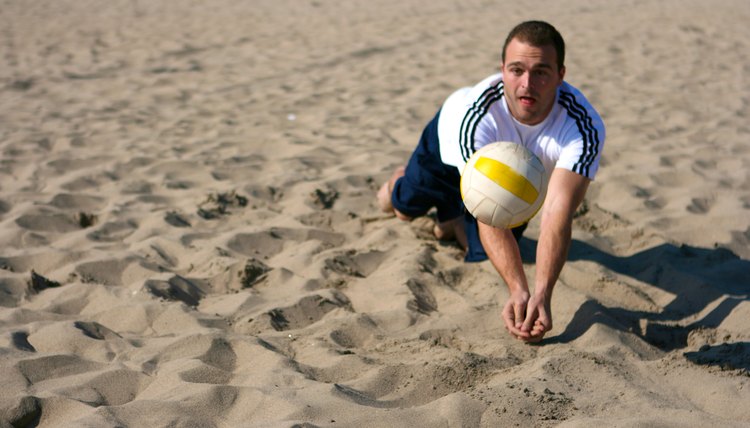How to Bump a Volleyball Without Pain

Playing volleyball is an excellent way to fulfill daily exercise requirements, but if you finish a game with red, sore marks up and down your arms, it's possible that you're using improper bumping technique. When done properly, bumping shouldn't hurt your arms since proper form creates contact between the ball and the base of the thumb. Practice proper technique in volleyball practices and on your own to participate in volleyball without excess pain.
Position yourself underneath the ball. Avoid stretching your arms out to meet the ball, as it creates unnecessary contact between the ball and the tender and sensitive inside of the forearms.
Squat with your legs slightly more than shoulder-width apart. When you make contact, force is applied using your legs, so bending your legs puts you in the proper power position. Using your arms to apply force leads to redness and soreness.
Hold your arms in front of your body, clasping your dominant hand over your non-dominant fist. Position your thumbs side-by-side and extend your arms in front of you. Maintain a slight bend in the elbows to cushion the impact or risk elbow pain later.
Make contact with the ball at the base of your thumbs, rather than your forearm. Instead of smacking the ball and applying upward force from your arms, press down into your legs and straighten your body so force is applied through your legs and lower back. You'll have more power behind the bump and it'll protect your arms from slapping at the ball.
Practice bumping on a daily basis to improve your technique, remembering that while your arms are the only appendage to make contact with the ball, they aren't the only body part that takes part in the bump. Using your entire body to direct the ball appropriately protects your arms and makes bumping less painful.
Tips
Until you have perfected the bump technique, wear long sleeve shirts or protective arm sleeves to help cushion the impact of the ball on your arms.
Warnings
If the soreness and pain worsens and doesn't respond to rest, contact your health care provider.
References
- Coaching Volleyball for Dummies; The National Alliance for Youth Sports
Writer Bio
Kay Ireland specializes in health, fitness and lifestyle topics. She is a support worker in the neonatal intensive care and antepartum units of her local hospital and recently became a certified group fitness instructor.
